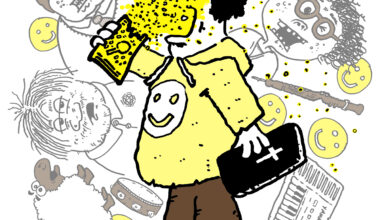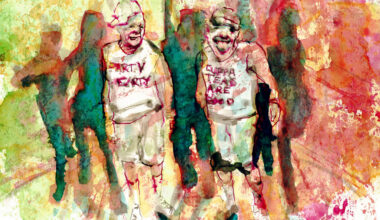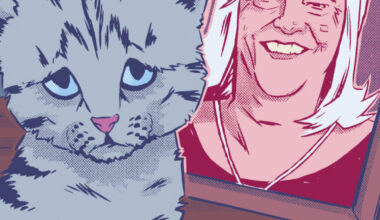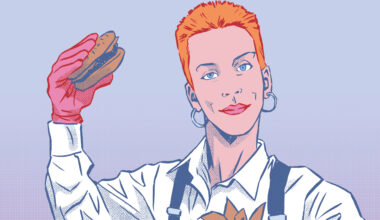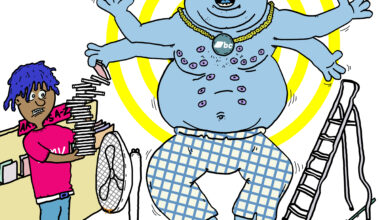He asked if he could write “proper stuff”. “Like what?” we said. “You know, about history and that,” he said. What could possibly go wrong?

This is not real. I am typing this on a computer, not on real paper. I will save these words into a digital file, not into a real filing cabinet. The file will then be sent electronically to the editors at Electronic Sound, who haven’t been real since issue 33 when a mishap with a stapler triggered the future robot ghost of Gary Numan who laid waste to all solid matter. None of this is real.
The music you hear is not real. It is zeroes and ones saved into a pretend cloud, mastered using pixels on a screen. Music is really computers. If we were being truly honest, we would listen to tunes by shoving ASUS Chromebooks into our ears. Go on, shove them in; squeeze them down your lugholes; pop those processors in yer pipes. Fill a bath with microchips and writhe and writhe until there’s music in every crevice. Oooh, Intel my insides! Erm. Sorry. What was I talking about?
Oh yes. Music is unreal. You can spot the moment music went from real to computers. Listen to The Beatles’ 1962 hit ‘Please Love My Hand’. It consists of real-world noises like jangly guitars and brushed snares and people going “Wooh”. Next, listen to Aphex Twin’s ‘Splap Dongle Burp27’. It’s a computerised sound of a drum machine being clicked on with a mouse. Now draw a graph between those two songs. If you drew the graph in Microsoft Paint, that’s the moment music became computers.
With the use of modern workstation programs, you can chop up your songs as efficiently as a drunken butcher in a cat cafe. It wasn’t always this case, and songwriters like Donovan had to cope without the use of Cakewalk Home Studio 2002. One of the most remarkable pre-digital editing techniques was magnetic tape splicing, in which producers attacked tape with scissors then Pritt-sticked it back together and hoped nobody would notice. It’s how Delia Derbyshire made the ‘Doctor Who’ theme. She very cleverly spliced the ‘Doctor Who’ theme until it sounded like the ‘Doctor Who’ theme. One band that was bestest at splicing was The Beatles, who are most famous for appearing earlier on this page. ‘Lucy In The Sky With Diamonds’ was originally ‘Lucy Sitting On The Sofa Watching The Benny Hill Show’, but you’d never know. Such is the genius of John Lennon and the other ones, you know, Paul, George and Thomas The Tank Engine.
Splicing has been with us throughout history. Scientists spliced an atom, Jesus spliced some loaves, and Henry VIII spliced six wives together to make one big wife. In modern music, samplers do the job that splicing used to do. Paul Hardcastle chopped up all the “n”s when sampling the number 19, much to the annoyance of the Bolab Sisters and Bormab Cook from the Housemartibs.
All of which brings us back to computers, where desktop icons imitate the real things of the past. For example, the email icon is the wrong side of an envelope. This is called a skeuomorph, which is a difficult word to remember. Just imagine children’s TV character Morph being skewered then grilled alive while Tony Hart laughs until blood comes out of his nose. Skewer-morph. You’ll never forget that now. Modern music editing software also uses skeuomorphic symbols: scissors to cut a section; an eraser to delete a section; a broom handle to bang on the ceiling of a section to tell the above section it’s making too much noise. It’s an enduring tribute to the past, like ITV2.
You may now cut up this column and rearrange it as you wish. Off now bog.
